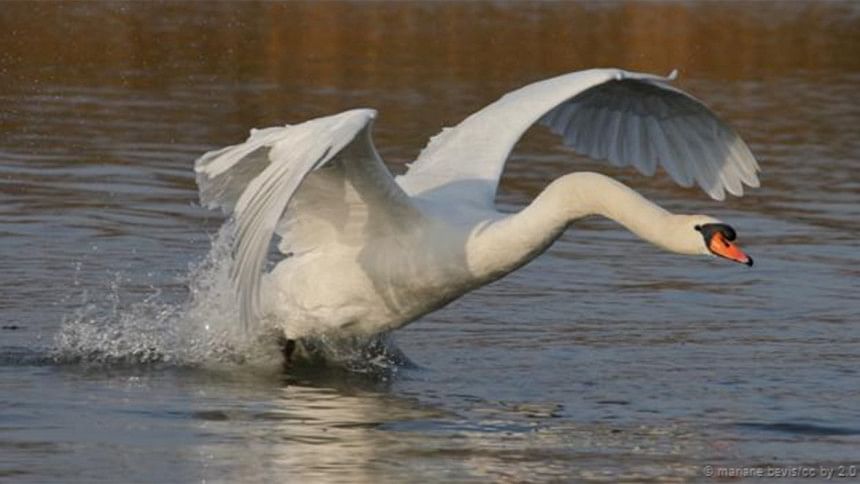How birds see straight (video)
Swans beat their wings five times per second, and yet their heads stay remarkably still. How is this possible?
You know how it is, you take to the air, your body flaps all over the place and it makes your head shake. It’s impossible to see where you are going. Everything is a bit fuzzy.
Pretty frustrating, if we could fly that is.
Not so for flying animals, they flap their wings about - some at super-charged speeds - and have no trouble seeing.
Their sight is extremely precise and that’s in part because flying birds have great head-eye co-ordination.
“Basically they are generating a force that changes wing beat by wing beat,” says David Lentink of Stanford University in California, US.
This is especially visible in birds with long necks such as swans or geese.
Geese, in fact, go one further. As a goose is on the way to landing, it will twist its body until it is flying upside down. At the same time its head turns 180 degrees in order to see straight.
Scientists have now sought to understand how exactly birds like geese and swans, can still see so well as they move. Surprisingly, Lentink says, not much was known about how birds move their heads in flight.

“That might seem like a simple question but we also put a lot of efforts in stabilising our own head when we are running. That’s important if we want to prevent blurry vision.
“It becomes essential when making fast manoeuvres, birds are great examples of this,” he says.
Modeling the flight trajectory of the ordinary swan as it flew over a lake, his team found that swans use their necks to stablise their head – in a similar way to how car suspension works.
Using their observations from whooper swans the team modeled this suspension system in the lab to find it works just like the swan’s neck.
Their long necks really do serve to keep their heads steady, made possible because of how they are built. The findings are published in the Royal Society Interface.
Most birds have three times the vertebrae as humans, and swans have 200 muscles on each side of their neck.
This feat of nature could be mimicked in drones, the team propose. That way, any cameras attached could smoothly capture the world below.

 For all latest news, follow The Daily Star's Google News channel.
For all latest news, follow The Daily Star's Google News channel. 



Comments